Introduction
Amid plummeting popularity at home after deciding to host the controversial state funeral for the slain former Prime Minister Abe Shinzo fully with tax payer’s money, Japan’s Prime Minister Fumio Kishida decided to stem this slide by his foreign policy activism. Three external factors drove Kishida to focus on his foreign policy: China’s increasing assertion over the disputed Senkaku islands, North Korea’s continuous missile launches over Japan’s air space and the tensions from the Russia-Ukraine war. Kishida felt it necessary to reach out to Japan’s friends and reinforce Japan’s commitments to rules-based regional order. Meeting the leaders frequently and sharing each other’s viewpoints and concerns is a part of building understanding and confidence-building strategy.
This led Kishida to undertake a three-day visit to Australia from 21 October 2022 for a summit meeting with his Australian counterpart Anthony Albanese. The basic purpose wastwo-fold: to strengthen further defence cooperation and deepen economic cooperation between the two countries.
Security Pact
Interestingly, Albanese hosted Kishida in Perth, the capital of Western Australia. One major highlight of Kishida’s visit was the signing of a ‘landmark’ security pact aimed at dealing with China’s military rise. The joint declaration that was signed committed both countries to deepen trilateral security relations with the US and to take action against countries violating international rules and norms.[1]
The new security pact revamped a fifteen year-old agreement reached at a time when weapons proliferation and terrorism were the major concerns. Based on the new agreement, the defence forces of both nations will conduct joint training exercises in Northern Australia, and enhance defence cooperation besides sharing intelligence and cooperation in many other connected areas. Albanese observed that the Joint Declaration on Security Cooperation is a reflection of alignment between the two countries and it sends an appropriate message. On his part, Kishida observed that the pact was a response to an “increasingly harsh strategic environment” without citing China or North Korea by name.[2]
Neither Japan nor Australia maintain intelligence operatives overseas and lack foreign informants who normally play key role in global espionage. Japan does not have a foreign spy agency equivalent to America’s CIA, Britain’s M16 or Russia’s FSB or India’s RAW. Australia’s ASIO is a fraction of the size of those organisations. This absence is compensated by formidable signals and geospatial capabilities such as electronic eavesdropping tools and high-tech satellites that provide invaluable intelligence on adversaries that both possess. So far, Japan has not worked with partners outside the US on security and therefore the security pact signals that Japan is ready now to be more pro-active in the security arena. This new pact could as well become a template for cooperation with other countries soon. The accord could also be another step toward Japan joining the powerful Five Eyes intelligence-sharing alliance between Australia, Britain, Canada, New Zealand and the US. Therefore, the signing of the accord could be epoch-making.
In view of the stressed environment in Japan’s neighbourhood, opinions are building up in Japan to review the country’s overall security posture. For the past few years, debates are becoming intense about a rethink in the country’s pacifist policies enshrined in Article 9 of the Constitution. It was the former Prime Minister Abe Shinzo who realised this necessity and made sincere efforts to change. He did not succeed as the issue is too complicated but he deserves the credit that he created the national consciousness to this need to be security-independent.
North Korea has repeatedly lobbed missiles over and around Japan. China has built the world’s largest navy, possesses now the world’s biggest standing army and amassed a nuclear and ballistic arsenal right on Japan’s doorstep. These are naturally worrying for Japan.
Kishida’s moves may be well-intentioned. But several hurdles to forge close security cooperation with allies remain. Sceptics and critics express concern whether Japan is ready for intelligence sharing with allies as they doubt Japan’s ability to handle sensitive confidential material and transmit it securely. Japan’s existing laws severely punish intelligence leaks. After the security pact, Australia will now demand that Japan shares intelligence on reciprocal basis and also as a part of the larger Five Eye network.
Earlier, Abe’s successor Yoshihide Suga had entered into an understanding with Albanese’s predecessor Scott Morrison to bolster bilateral defence cooperation and agreed in principle on a “landmark” pact to facilitate joint exercises as the key US allies in Asia to counter China’s growing influence. After Suga and Morrison met in Tokyo in November 2020, both voiced “serious concern” in the joint statement about the situation in South China Sea and on the Japan-administered Senkaku islands issue where China frequently sends coast guards ships nearby to assert its control.[3] Morrison was the first foreign leader to visit Tokyo after Suga took office and also was the first to hold phone talks with Suga. This shows that there was detailed prior discussion in both the countries and sufficient preparations had already been made when the security pact was inked by Kishida and Albanese in Perth.
Deepening Economic Ties
The other important dimension of Kishida-Albanese meeting was for laying a roadmap for deepening the existing economic ties between the two countries. Here, the decision of Albanese to host Kishida in Perth and not in Canberra or Melbourne or even in Sydney carries some significance. Perth is the capital of the mineral and energy export state of Western Australia. It was also ideal for Kishida seeking to boost energy imports.
For over two decades from the 1960s and through the 1970s, Japan had emerged as the main export market for Australian primary resources to meet Japan’s increasing demand from industries engaged in the country’s rapid economic development process. Japan’s import-led growth matched perfectly well with Australia’s export-oriented economic policy and thus the economies of both countries had become complementary. The composition of trade commodities emerged to be predominantly and overwhelmingly resource-based primary products. This high boom phase was drastically affected when Japan entered into the phase of economic slowdown and entered into the era of Lost Decades. As Japanese economy contracted and demands for resources fell, Australia started looking to diversify its export markets. This coincided when Chinese economy entered into a boom phase and Australia emerged as the main supplier to feed China’s economy and overtook Japan as the main destination for Australian resources. This honeymoon phase came under review when China started flexing its military muscle in many regional issues with its policy of assertiveness. The Covid-19 pandemic that originated in the Chinese province of Wuhan further led to the deterioration of China-Australia relationship after Australia demanded WHO’s intervention to investigate its origin.
As it transpires from the above explanation, Japan-Australia relations have gone through a full circle and now entered a new phase when both sides have found convergence of interests on a host of issues. The need for deepening security/defence cooperation stems from this narrative. The shared concern about China’s rise is the main driver.Both Kishida and Albanese decided to upgrade their 2007 bilateral security pact and reviewed the progress that have made in promoting the partnership.
The economic dimension is being revisited as Japan struggles to ignite its ailing economic engine.Japan imports about 40 per cent of its Liquefied Natural Gas (LNG) from Australia, which is its largest provider. In fact, the state of Western Australia exports most of the country’s LNG. Japan is looking at securing its energy supply due to global turbulence caused by the Ukraine conflict. The discussion also figured securing energy sources such as ammonia and hydrogen.
Japan also imports iron ore and other minerals from Japan. This economic dimension was behind Albanese’s decision to host Kishida in Perth with a view to bolster energy cooperation. Australia being the key and stable energy supplier for resource-scarce Japan, uninterrupted supplies of critical raw materials shall help Japan to resuscitate its struggling economy. Prime ministers Kishida and Albanese also vowed more cooperation on critical minerals, the environment and energy.
Besides a major buyer of Australian gas, Japan has made a series of big bets on hydrogen energy produced in Australia as it tries to ease a lack of domestic energy production and dependence on fossil fuels. Rare earth is another critical mineral that Japan would depend to source from Australia. Rare earth minerals are critical in producing everything from wind turbines to electric vehicles. China currently dominates world production of critical minerals, leading some to worry that supplies could be cut for political reasons. In view of the strained ties with China, Japan cannot afford to depend on China for this critical material. Beijing already created some problems in the past and threatened to use it as a bargaining tool.
Other Issues of Common Interests
Besides Australia being Japan’s special economic and strategic partner, both countries share universal values, such as freedom and democracy as well as strategic outlooks. Both are members of the Quad dialogue which also includes the US and India. Quad was established to discuss regional security and economic issues as a counter to China’s growing influence. Being a Quad member, India’s ties with the US have warmed. Japan and Australia being allies of the US also share similar vision for regional security and Japan was keen to elevate its cooperation with Australia. Therefore, Kishida and Albanese issued a new declaration on security cooperation to reinforce the 2007 pact looking ahead to the next decade.
The Japan-Australia Declaration on Security Cooperation of 2007 inked by Shinzo Abe and John Howard, the then Prime Ministers of Japan and Australia, had referred to responses to development of nuclear weapons and missiles by North Korea and anti-terrorism collaboration, but had made no mention of the threat posed by China. At that time, the Australian government was not inclined to move away from China, which it regarded as a major trade partner[4] and was lukewarm to the Quad concept. That scenario has dramatically changed now 15 years after signing of that declaration because of China’s aggressive behaviour stemming from its military and economic power. The 2007 pact committed both the countries to regional, global peace and stability, besides cooperation in counterterrorism and rebuilding Iraq after the 2003 war.
This time around, both Kishida and Albanese agreed to implement the Reciprocal Access Agreement, a security pact Kishida struck in January 2022 with the former Australian Prime Minister Scott Morrison that removes obstacles to holding joint military exercises in either country.
In the wake of the deteriorating regional security environment, Japan has been pondering seriously to strengthen its own security by allocating more money towards defence expenditure, even crossing the self-imposed ceiling of not exceeding 1 per cent of the GDP. Expanding military cooperation with other friendly nations such as Australia, India and Vietnam is also Kishida’s priority.
More recently, China has tried to make inroads and spread influence over Pacific Island nations. The signing of the security pact with the Solomon Islands recently raised fears of a Chinese naval base being established in the South Pacific. Though Wang Yi’s subsequent visit to some Pacific island nations and attempt to impose a security pact on its own term did not succeed, this development rang alarm bells in Canberra, Washington and New Zealand. [5] Discussing this development was also in the agenda of Kishida-Albanese talks.
Albanese has already made two trips to Japan in a short time since he took office in May 2022, first for the Quad meeting in the same month held in Tokyo and again in September to attend Abe’s state funeral. Despite the looming Diet sessions, Kishida had to return the favour by visiting Australia. This was a golden opportunity for both Kishida and Albanese to forge personal ties of trust, necessary for working together with a common goal in the larger interests of peace and stability in the Indo-Pacific.
References
[1] “Japan and Australia ink 'landmark' security pact to counter China”, The Japan Times, 22 October 2022,
https://www.japantimes.co.jp/news/2022/10/22/national/politics-diplomacy/japan-australia-fumio-kishida-anthony-albanese/
[2] “Japan, Australia ink security pact with eye on China”, 22 October 2022, https://mb.com.ph/2022/10/22/japan-australia-ink-landmark-security-pact/
[3]RyotaroNakamaru, “Japan, Australia bolster defense ties amid China’s growing influence”, 17 November 2020, https://english.kyodonews.net/news/2020/11/d1f37c2e0064-update1-japan-australia-reach-agreement-on-status-of-forces-pact.html#:~:text=By%20Ryotaro%20Nakamaru%2C%20KYODO
[4] “Security Cooperation to Take Center Stage in Japan-Australia Summit”, Japan Forward, 19 October 2022, https://japan-forward.com/security-cooperation-to-take-center-stage-in-japan-australia-summit/
[5]See, Rajaram Panda, “The China-Solomon Islands Security Pact Roils the Region”, Global Asia, Vol. 17, no. 2, June 2022, pp. 65-72, https://www.globalasia.org/v17no2/feature/chinas-security-pact-with-the-solomon-islands-roils-the-region_rajaram-panda
(The paper is the author’s individual scholastic articulation. The author certifies that the article/paper is original in content, unpublished and it has not been submitted for publication/web upload elsewhere, and that the facts and figures quoted are duly referenced, as needed, and are believed to be correct). (The paper does not necessarily represent the organisational stance... More >>
Image Source: https://aniportalimages.s3.amazonaws.com/media/details/ANI-20221024101653.jpg

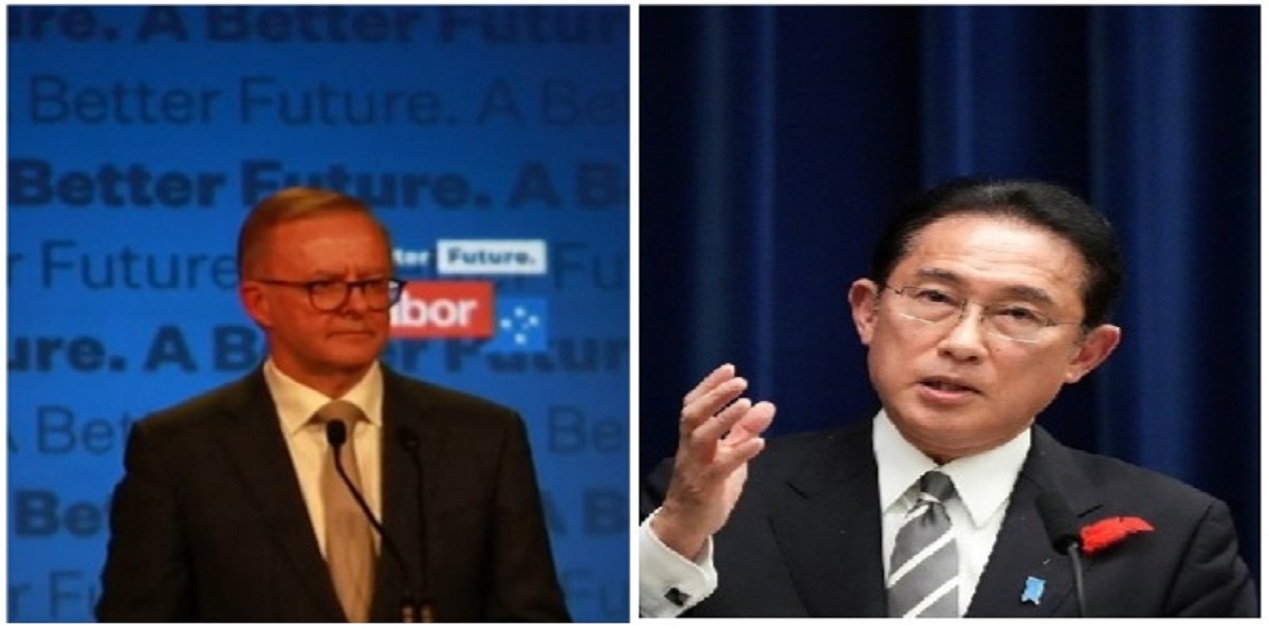
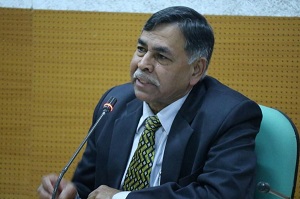

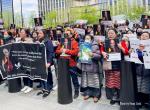



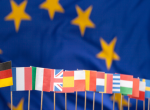

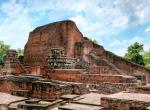
Post new comment